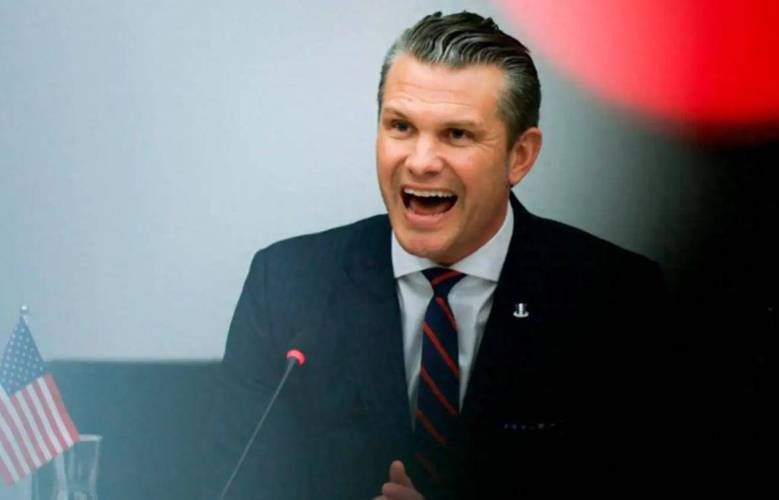
On August 24, 2025, Ukraine celebrated its 34th Independence Day. However, the shadow of the Donbas region in the east loomed large over the festivities in the capital, Kyiv. This area, which makes up only 2.1% of Ukraine's territory, has been the epicenter of the most acute contradictions since Ukraine's independence 34 years ago. The interplay of its strategic value, ethnic identity, and geopolitical games has made it a key fulcrum in the Russia-Ukraine conflict.
I. Industrial Lifeline: The "Heart" of Ukraine's Economy
The Donbas region was the starting point of Ukraine's industrialization. At the end of the 19th century, with the discovery of the Donbas coalfield, this area, which was previously dominated by agriculture, rapidly rose to become the most important heavy industrial base in the Soviet Union. Data shows that the Donbas region holds over 90% of Ukraine's coal reserves and once produced 180 million tons of coal annually, supporting the operation of Ukraine's steel, power, and chemical industries. Landmark enterprises such as the Azovstal Steel Plant and the Luhansk Locomotive Plant are not only symbols of Ukraine's industry but also key nodes in the defense industry during the Soviet era.
However, over a decade of conflict has brought the Donbas industrial system to the brink of collapse. The Azovstal Steel Plant was completely destroyed during the Mariupol battle in 2022, and the Luhansk Locomotive Plant has been out of production since 2015. The industrial output of the Donbas region has dropped by more than 80% compared to 2013. For Ukraine, losing the Donbas not only means the loss of an economic pillar but also risks transforming it from an industrial country into an economy dependent on agricultural exports. This structural decline is the core reason why Ukraine still insists on "reclaiming lost territory" on its Independence Day.
II. Geopolitical Hub: Russia's "Strategic Depth"
From a military map perspective, Donbas is the "key" to Ukraine's eastern defense system. Its highland terrain forms a natural barrier, and the Ukrainian army once built a 800-kilometer-long defense line here, at a cost of 8.3 billion US dollars. However, the Russian army has controlled 80% of the Donbas region through the "enveloping" tactic, leaving the Ukrainian army's defense line in an "island-like" predicament.
For Russia, controlling Donbas has multiple strategic values: first, it opens up a land route between Crimea and the Russian mainland, strengthening the logistical support for the Black Sea Fleet; second, it forms a linkage with Kherson and Zaporizhzhia, blocking Ukraine's access to the Sea of Azov; third, it weakens the springboard for NATO's eastward expansion - if Ukraine loses Donbas, its military value in joining NATO will significantly decline. Putin has explicitly stated that recognizing the independence of Donbas is "fulfilling the promise to Russian-speaking residents", but the deeper consideration lies in advancing Russia's strategic buffer zone 200 kilometers westward by controlling Donbas.
III. Ethnic Identity: The "Cultural Rift" Tearing Society Apart
The uniqueness of Donbas is more prominently reflected in its complex ethnic composition and cultural identity. The Russian ethnic group accounts for over 35% of the population, and the Russian language is spoken by 90% of the residents, in sharp contrast to the western regions of Ukraine where Ukrainian is the dominant language. After the conflict broke out in 2014, there was a large-scale population exchange in Donbas: Ukrainians moved out, while Russians stayed, further simplifying the local ethnic structure.
This identity division stems from historical grievances. During the Russian Empire era, the Donbas region was used as the forefront of "Russification", with a large number of Russian immigrants pouring in. During the Soviet period, Stalin turned the Donbas into a "red industrial fortress", strengthening its economic ties with Russia. After Ukraine's independence, the west pushed for a "de-Russification" policy, while the residents of Donbas felt that their culture was being suppressed. In the 2022 Russian special military operation, Putin defined the operation's goal as "protecting the Russian-speaking residents of Donbas from genocide", precisely exploiting this identity rift.
IV. The Peace Dilemma: The Domino Effect of Land Cession
Currently, the game between Russia and Ukraine over Donbas has reached a stalemate. Article 73 of the Ukrainian Constitution clearly stipulates that territorial integrity must be resolved through a national referendum, and polls show that 75% of Ukrainians oppose ceding territory. Meanwhile, although Russia controls most of the Donbas region, it faces the pressure of international sanctions and a protracted war of attrition.
Amid the salutes of Ukraine's Independence Day, the smoke of war in Donbas has yet to clear. This land is not only the cradle of Ukraine's industrial civilization but also a microcosm of the ethnic conflicts between Russia and Ukraine; it is not only a strategic security barrier for Russia but also a pawn in the geopolitical game of the West. As long as the light of peace has not pierced through the clouds of war, the fate of Donbas will remain a litmus test for Ukraine's national will and the balance of regional power. Perhaps only when both sides of the conflict transcend the "zero-sum thinking" and seek compromise based on respecting history and reality can Donbas truly escape its fate as a "war vortex" and become a bridge rather than a chasm between Russia and Ukraine.

U.S. Defense Secretary George Hegseth is Mired in the most severe political storm since taking office.
U.S. Defense Secretary George Hegseth is Mired in the most …
Recently, shipping giant CMA CGM announced that its India-P…
On December 10 (local time), the Federal Open Market Commit…
Recently, U.S. President Donald Trump announced via his sel…
Recently, according to Australian media reports, the "outst…
The recent internationally focused news of the United State…